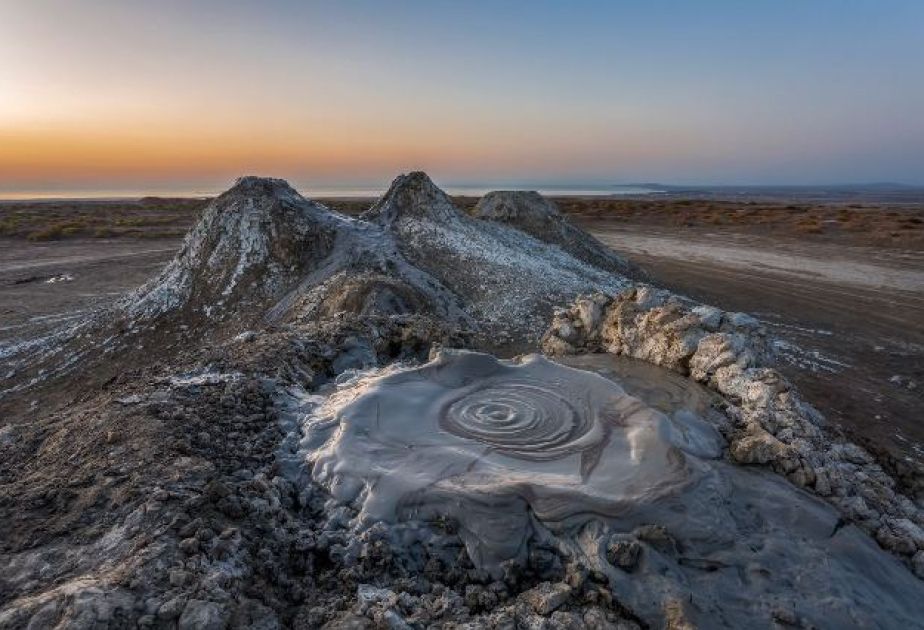Bozdag-Guzdek mud volcano erupts after 15 years

The Bozdag-Guzdek mud volcano has erupted in Azerbaijan, Azernews reports.
The Republican Seismic Survey Centre says that the volcanic eruption took place on May 13 at 02:13 local time, lasting for nine minutes.
According to the data from the seismic stations that monitor mud volcanoes, the depth of the crater of the Bozdag-Guzdek mud volcano is 3.5 kilometres, and the released energy is 8.67x106 Joules.
Bozdag-Guzdek is considered one of the largest orographic units of the Absheron Peninsula. The last eruption of this volcano occurred on February 13, 2009.
The Land of Fire is home to many extraordinary natural wonders.
From emerald forests to majestic waterfalls, there are numerous natural sights in Azerbaijan that are waiting to be explored.
Mud volcanoes are undoubtedly one of the country's most-visited natural attractions, encouraging people to travel to far-flung destinations just to catch a glimpse of this natural miracle.
In total, there are about 700 mud volcanoes in the world, and 350 of them are located in Azerbaijan.
NASA geologists studying Mars concluded that the mud volcanoes of Azerbaijan are similar to the uplands of the planet in their structure.
Toragay is the largest mud volcano in the world and is located in the south of Gobustan.
The height of the volcano is 400 metres, and the volcanic crater is 150 metres in diameter. The mud volcano erupted 6 times, from 1841 to 1950.
In 2004, the Toragay Mud Volcano was added to the Guinness Book of World Records.
Boyuk Kanizadag is another mud volcano that thrills everyone who sees it.
It is known as the largest mud volcano in the territory of Gobustan. This mud volcano erupted on October 10, 2001, shooting out flames 300 metres in the air.
Located in the suburb of Baku, the Otman Bozdag mud volcano erupted in 2017.
The Azerbaijan National Academy of Sciences (ANAS) announced that two eruptions were recorded in the territory of the Sangachal settlement, Garadagh district. This was the ninth eruption of the mud volcano.
Studies have revealed the presence of rare types of minerals, non-specific sulphates, oxides, natural iron, and many other elements in the mud volcanic breccia.
Note that volcanic breccia consists mainly of a mixture of clay mass and fragments of hard rocks.
The studies suggest that these minerals were formed under the influence of deep-mud volcano fluids.
Rich in minerals, mud volcanoes in Azerbaijan can be used for medicinal purposes.
Mud is considered suitable for treatment if it contains a large number of organic compounds, such as iodine, bromine, hydrogen sulphide, etc.
In general, the healing properties of about 40 types of volcanic mud have been studied and confirmed by biochemical analysis.
The volcanic mud of Akhtarma Garadag, Dashgil, Bahar, and Masazir are the most studied in the country from a medical point of view.
They are considered similar to healthy mud found in Akhtala, Georgia.
Mud resort of Georgia due to the high content of bromine, iodine, boron, and other organic compounds.
----
Laman Ismayilova is AzerNews’ staff journalist, follow her on Twitter: @lmntypewriterrr
Follow us on Twitter @AzerNewsAz
Here we are to serve you with news right now. It does not cost much, but worth your attention.
Choose to support open, independent, quality journalism and subscribe on a monthly basis.
By subscribing to our online newspaper, you can have full digital access to all news, analysis, and much more.
You can also follow AzerNEWS on Twitter @AzerNewsAz or Facebook @AzerNewsNewspaper
Thank you!

